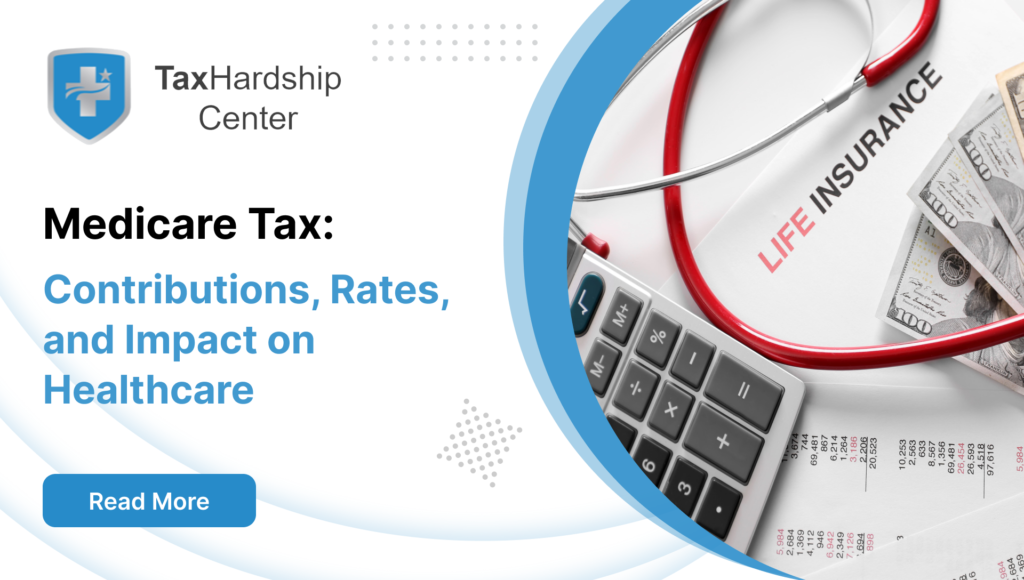Welcome to our comprehensive guide on Medicare tax – a vital aspect of the U.S. healthcare system. Medicare tax, a key component of the Federal Insurance Contributions Act (FICA) tax, sustains the Medicare program, offering health insurance to millions of Americans.
This guide will demystify Medicare tax, covering its importance, coverage, rates, and implications. We’ll also delve into additional Medicare taxes, income thresholds, and their impact on employers and employees. Additionally, we’ll explore how Medicare taxes intersect with the Affordable Care Act (ACA) and broader income taxation.
Whether you’re a seasoned professional or new to the workforce, this guide equips you with the essential knowledge to navigate Medicare tax confidently, understand your obligations, and appreciate its significance in healthcare funding and economic stability.
Understanding Medicare Tax
The Medicare tax is a crucial component of the federal payroll tax system in the United States. It is the primary funding source for the Medicare program, a government initiative designed to provide health insurance coverage to specific demographics. These include individuals aged 65 or older, certain younger people with disabilities, and individuals diagnosed with End-Stage Renal Disease (ESRD).
The Medicare tax is one of the two components of the Federal Insurance Contributions Act (FICA) tax, with the other being the Social Security tax. Both employers and employees contribute to the Medicare tax, making it a shared responsibility. The contributions are made through payroll taxes and are calculated based on a set percentage of the employee’s wages.
The Medicare program, funded by this tax, plays a vital role in the United States’ healthcare system. It ensures that the elderly and those with specific disabilities or severe health conditions can access medical care. The funds collected through the Medicare tax cover a portion of the healthcare costs for these individuals, reducing their out-of-pocket expenses and providing them with a safety net for their health needs.
The rate at which the Medicare tax is levied is not static and can vary depending on several factors, including the employee’s income level and filing status. Understanding these nuances is essential to accurately calculate the Medicare tax and its impact on employees and employers.
How Tax Hardship Center Helps With Medicare Tax
Discover how the Tax Hardship Center can support you with Medicare Tax concerns. Our dedicated team offers tailored solutions, evaluating each situation to create personalized strategies. From negotiating payment schedules to minimizing tax obligations, we guide you through the process. With our knowledge of tax regulations, we strive to alleviate financial pressures and pave the way to stability. Schedule a free consultation now.
What Is FICA Tax?
FICA tax refers to the combination of Social Security and Medicare taxes. The federal payroll tax funds Social Security and Medicare programs, essential for the United States’ social safety net.
What is covered in Medicare?
Medicare, funded by the Medicare tax, provides comprehensive coverage divided into four distinct parts – Part A, Part B, Part C, and Part D, each designed to cover specific healthcare services.
Part A, often called hospital insurance, primarily covers inpatient hospital stays. It also extends its coverage to include skilled nursing facilities, hospice care, and certain home health care services. This part of Medicare ensures that beneficiaries can access the necessary care when admitted to a hospital or a similar facility.
Part B is medical insurance. It is designed to cover the costs of doctors’ services, outpatient care, medical supplies, and preventive services. This includes services from physicians and other healthcare providers, outpatient care, durable medical equipment, and home health care. Part B also covers many preventive services to prevent illnesses or detect them at an early stage.
Part C, also known as Medicare Advantage Plans, is an alternative to the traditional Medicare program. Private companies approved by Medicare offer these plans. They provide all the benefits of Part A and Part B, often including additional benefits such as vision, hearing, dental, and health wellness programs. Most Medicare Advantage Plans also include Part D, prescription drug coverage.
Part D is the component of Medicare that provides prescription drug coverage. It helps cover the cost of prescription drugs, including many recommended shots or vaccines. It can be added to Original Medicare, some Medicare Cost Plans, some Medicare private plans, and Medicare Medical Savings Account Plans.
Contributions to Medicare
Contributions to Medicare, funded by the Medicare tax, are a shared responsibility between employees and employers, forming a critical part of the U.S. payroll tax system. These contributions are automatically deducted from employees’ wages and matched by employers. This system ensures a steady flow of funding into the Medicare program, which is essential for its sustainability and ability to provide health coverage to beneficiaries.
For self-employed individuals, the process is slightly different. They are responsible for the entire contribution, as they are considered both the employer and the employee. This is done through the self-employment tax, which encompasses Medicare and Social Security taxes. Despite the higher burden, this system ensures that self-employed individuals also have access to the benefits of the Medicare program upon reaching eligibility.
The funds generated from these Medicare tax contributions finance the Medicare program, including hospital insurance (Part A), medical insurance (Part B), and prescription drug coverage (Part D). These contributions are crucial for funding current beneficiaries’ healthcare costs and are significant in securing the program’s future. They ensure that Medicare can continue providing comprehensive health coverage to eligible individuals, including those 65 or older, certain younger people with disabilities, and individuals with End-Stage Renal Disease (ESRD).
2024 Medicare Tax Rates
The Internal Revenue Service (IRS) determines the Medicare tax rate, which can change based on legislation. As of 2023 and 2024, the Medicare tax rate for employees and employers is 1.45% of earned income, with no wage cap. Self-employed individuals pay a combined rate of 2.9% since they are responsible for both the employee and employer portions. For high-income earners, an additional 0.9% in Additional Medicare Tax may apply, making their total Medicare tax rate 2.35% on earnings above the applicable threshold.
Medicare Surtaxes
In addition to the standard Medicare tax, there exists an additional levy known as the Medicare Surtax or the Additional Medicare Tax. This tax is designed to apply to individual incomes exceeding certain thresholds, primarily affecting high-income earners.
The Additional Medicare Tax does not replace the standard Medicare tax but functions as a supplement. This surtax is levied at a rate of 0.9% on wages, compensation, and self-employment income over a threshold amount based on the individual’s filing status. The threshold amounts are not indexed for inflation and vary depending on whether the individual is single, married, filing jointly, or married filing separately.
Introducing the Medicare Surtax is part of a broader effort to ensure the sustainability of the Medicare program. By imposing this additional tax on high-income earners, the government aims to generate extra revenue to help finance the Medicare program. This is particularly important given the rising healthcare costs and the increasing number of beneficiaries as the population ages.
Medicare Taxes and the Affordable Care Act
The Affordable Care Act (ACA), also known as Obamacare, brought about significant changes to the U.S. healthcare system, including modifications to the Medicare tax structure. One of the fundamental changes was the introduction of the Additional Medicare Tax, which went into effect in 2013.
The Additional Medicare Tax is an extra levy of 0.9% that applies to individuals whose wages and compensation exceed a certain income threshold. This threshold varies based on the individual’s filing status, such as single, married filing jointly, or married filing separately. The tax is calculated based on the amount the individual’s income exceeds the threshold, not the total revenue.
Implementing the Additional Medicare Tax under the ACA aimed to bolster the funding for the Medicare program. By imposing this additional tax on high-income earners, the ACA sought to ensure the sustainability of the Medicare program, which provides essential health coverage to millions of Americans.
What Is Medicare Tax Used for?
The Medicare tax plays a critical role in the U.S. healthcare system. The revenues collected from this tax are primarily allocated to the Hospital Insurance Trust Fund, used to finance Medicare Part A benefits.
Medicare Part A, often called hospital insurance, provides coverage for various healthcare services. This includes inpatient hospital care, encompassing treatments received during hospital admissions, such as surgeries, room and board, and other related services.
In addition to hospital care, the Hospital Insurance Trust Fund also covers skilled nursing care. This refers to a high level of medical care that trained individuals, such as registered nurses or professional therapists, must provide. This type of care, often needed after a hospital stay, includes services like intravenous injections and physical therapy.
The fund also provides hospice care, a unique form of care for terminally ill people, and certain home health services. Home health services include intermittent skilled nursing care, physical therapy, speech-language pathology, and continued occupational services.
Depositing and reporting taxes
Employers are responsible for withholding the correct amount of Medicare taxes from their employee’s paychecks, depositing these funds along with their matching contributions to the IRS, and reporting these taxes to the IRS using the appropriate forms.
Medicare taxes for the self-employed
Self-employed individuals must pay both the employee and employer portion of Medicare taxes. When they file their federal income tax return, they do so through a Self-Employment Contribution Act (SECA) tax.
Does Everyone Have to Pay Medicare Tax?
While most employed individuals must pay Medicare tax, there are exceptions, such as certain government employees and foreign workers. However, the vast majority of workers contribute to Medicare through payroll taxes.
What Is Considered Taxable Income for Medicare Tax?
For Medicare tax purposes, taxable income includes wages, salaries, bonuses, and other compensation for services provided. For self-employed individuals, net earnings from self-employment are subject to Medicare tax.
Conclusion:
Mastering Medicare tax is essential for understanding your obligations and navigating the intricacies of the U.S. healthcare system. By grasping the fundamentals of Medicare tax contributions, rates, and coverage, individuals can make informed decisions regarding their financial planning and healthcare needs. Whether you’re an employer, employee, or self-employed, understanding how Medicare tax works empowers you to fulfill your responsibilities and access essential healthcare services. As the landscape of healthcare and taxation continues to evolve, staying informed about Medicare tax ensures that you can confidently navigate these changes and secure your financial well-being.
Why Tax Hardship Center?
1. Hassle-Free Assistance:
Say goodbye to sleepless nights and endless tax-related stress. At the Tax Hardship Center, we believe in simplifying the complex. Our team of experts is dedicated to guiding you through every step of the process, ensuring that your tax concerns are met with precision and care.
2. 14-Day Money Back Guarantee:
We’re so confident in our ability to ease your tax worries that we offer a 14-day money-back guarantee. If, for any reason, you’re not satisfied with our service, we’ll gladly refund your investment. Your peace of mind is our top priority!
3. Free Consultation:
Are you curious about how we can transform your tax experience? Book a free consultation now! Our team will assess your situation, answer your questions, and provide free insights tailored to your needs.
4. Nationwide Coverage:
No matter which corner of the United States you call home, the Tax Hardship Center covers you. We proudly serve all 50 states, bringing our expertise to your doorstep. Wherever you are, our commitment to excellence follows.
FAQs:
1. Who is eligible to receive Medicare benefits?
Medicare benefits are primarily available to individuals aged 65 or older, certain younger people with disabilities, and individuals diagnosed with End-Stage Renal Disease (ESRD).
2. What does the Medicare tax fund?
The revenues collected from the Medicare tax primarily fund the Hospital Insurance Trust Fund, which finances Medicare Part A benefits. These benefits include coverage for inpatient hospital care, skilled nursing care, hospice care, and certain home health services.
3. What is the Medicare tax rate?
As of 2023 and 2024, the Medicare tax rate for employees and employers is 1.45% of earned income, with no wage cap. Self-employed individuals pay a combined rate of 2.9%, as they are responsible for both the employee and employer portions.
4. Are there additional taxes for high-income earners?
High-income earners may be subject to an Additional Medicare Tax of 0.9% on earnings above specific thresholds. This tax aims to ensure the sustainability of the Medicare program and primarily affects individuals with wages and compensation exceeding certain income thresholds.
5. How can the Tax Hardship Center assist with Medicare tax issues?
The Tax Hardship Center offers personalized assistance for individuals struggling with Medicare taxes. Our team evaluates each case to develop customized strategies, including negotiating payment plans, reducing tax liabilities, and representing clients before the IRS.








